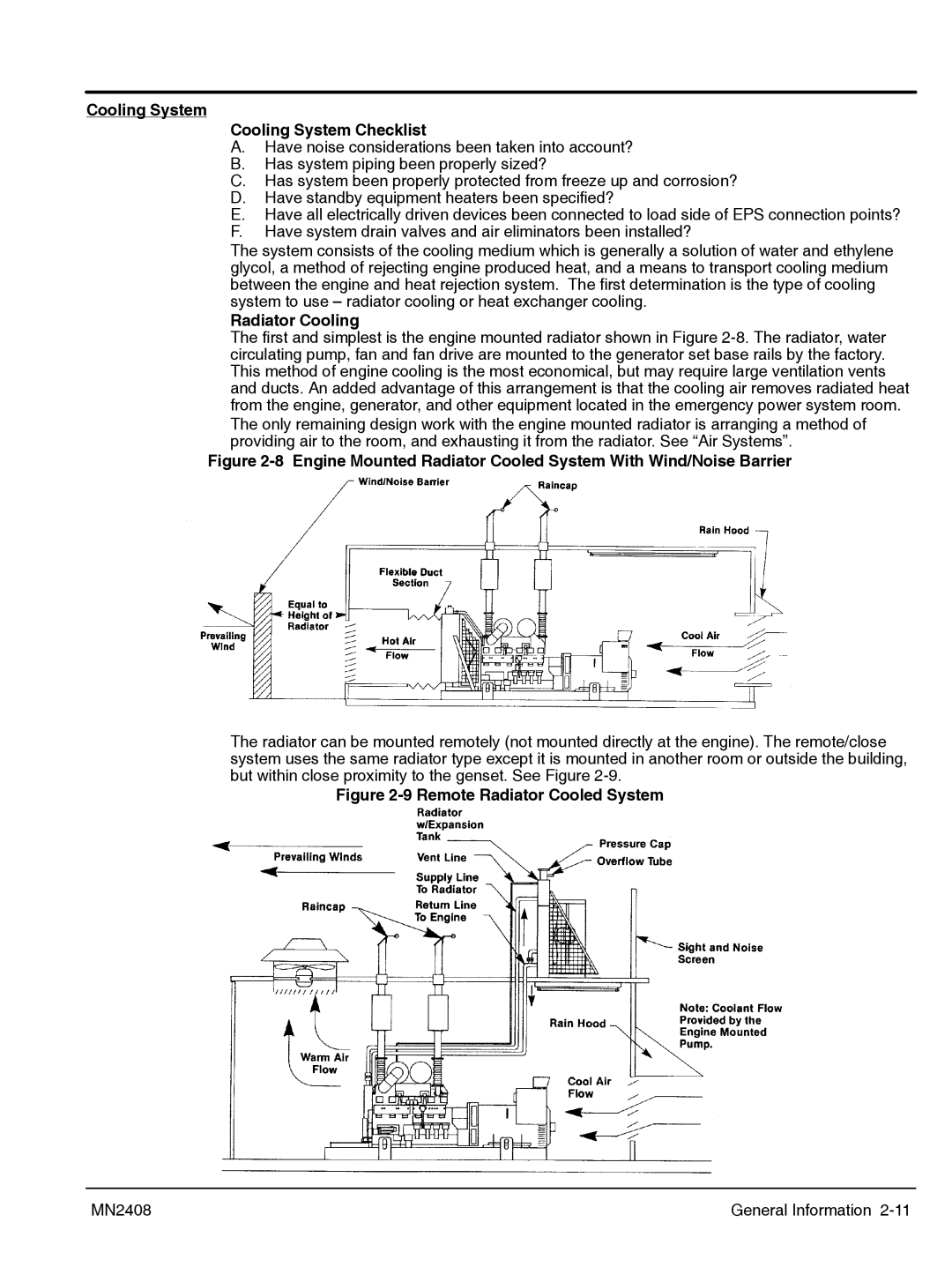
Cooling System
Cooling System Checklist
A.Have noise considerations been taken into account?
B.Has system piping been properly sized?
C.Has system been properly protected from freeze up and corrosion?
D.Have standby equipment heaters been specified?
E.Have all electrically driven devices been connected to load side of EPS connection points?
F.Have system drain valves and air eliminators been installed?
The system consists of the cooling medium which is generally a solution of water and ethylene glycol, a method of rejecting engine produced heat, and a means to transport cooling medium between the engine and heat rejection system. The first determination is the type of cooling system to use – radiator cooling or heat exchanger cooling.
Radiator Cooling
The first and simplest is the engine mounted radiator shown in Figure
The only remaining design work with the engine mounted radiator is arranging a method of providing air to the room, and exhausting it from the radiator. See “Air Systems”.
Figure 2-8 Engine Mounted Radiator Cooled System With Wind/Noise Barrier
The radiator can be mounted remotely (not mounted directly at the engine). The remote/close system uses the same radiator type except it is mounted in another room or outside the building, but within close proximity to the genset. See Figure
Figure 2-9 Remote Radiator Cooled System
MN2408 | General Information |
